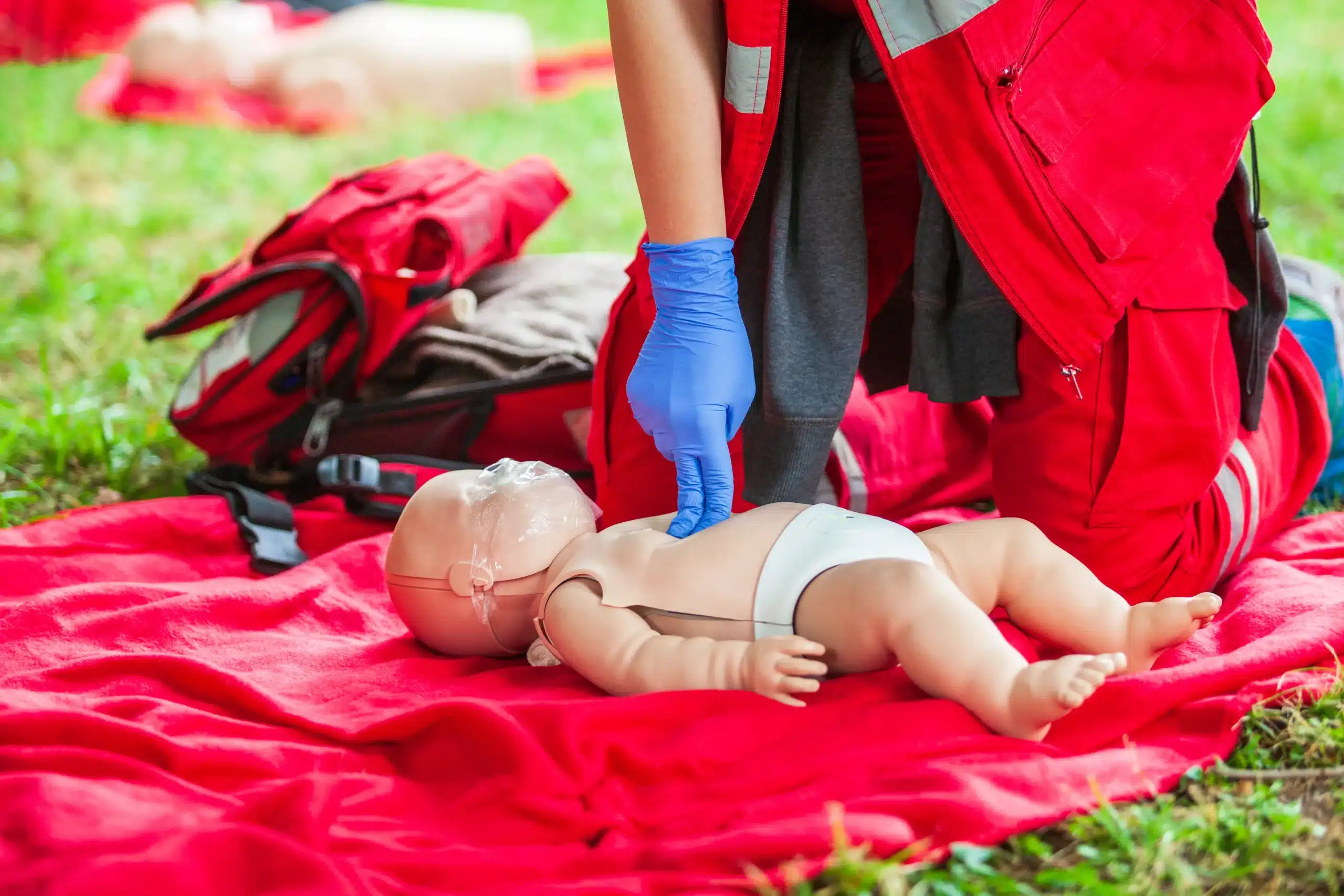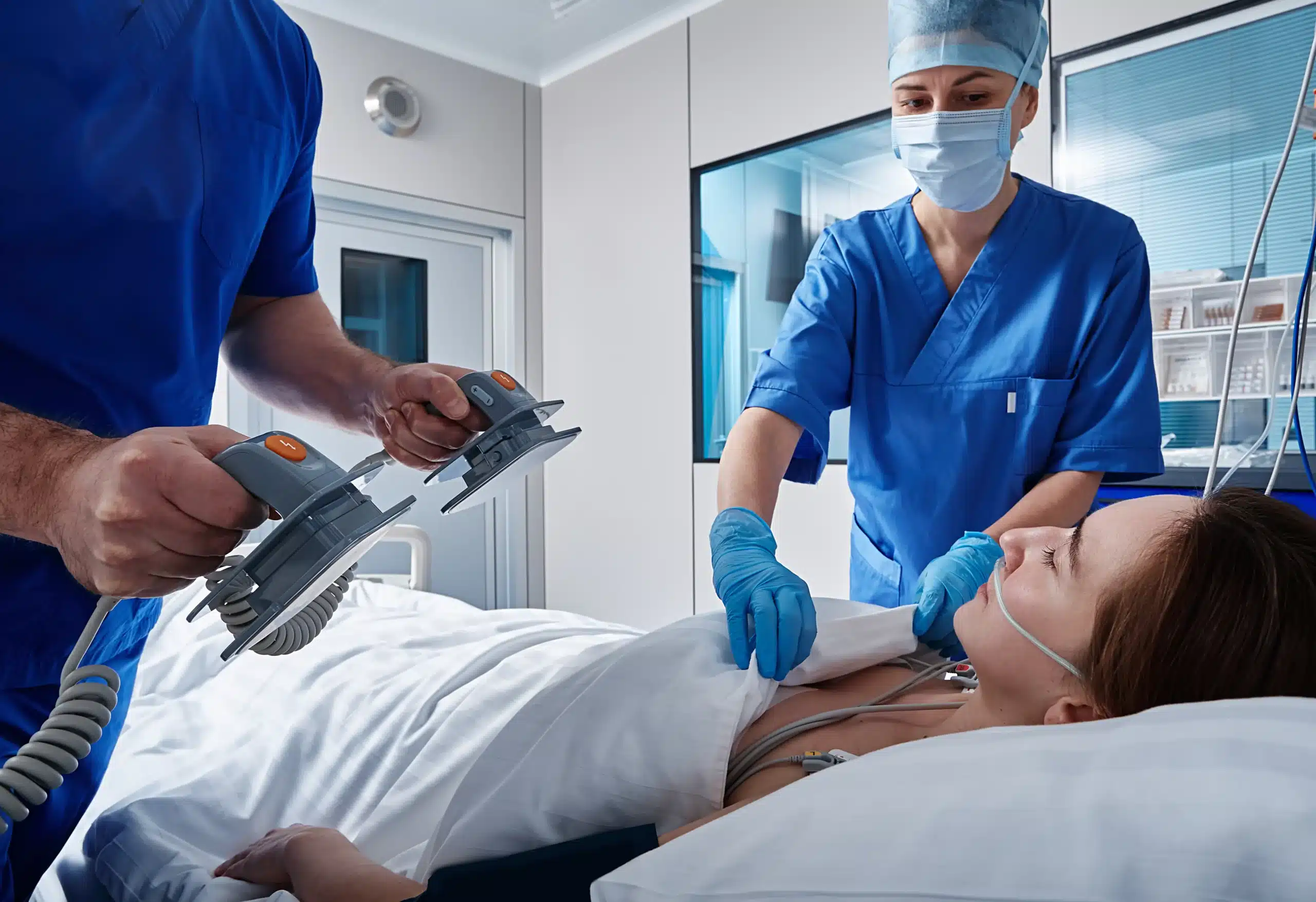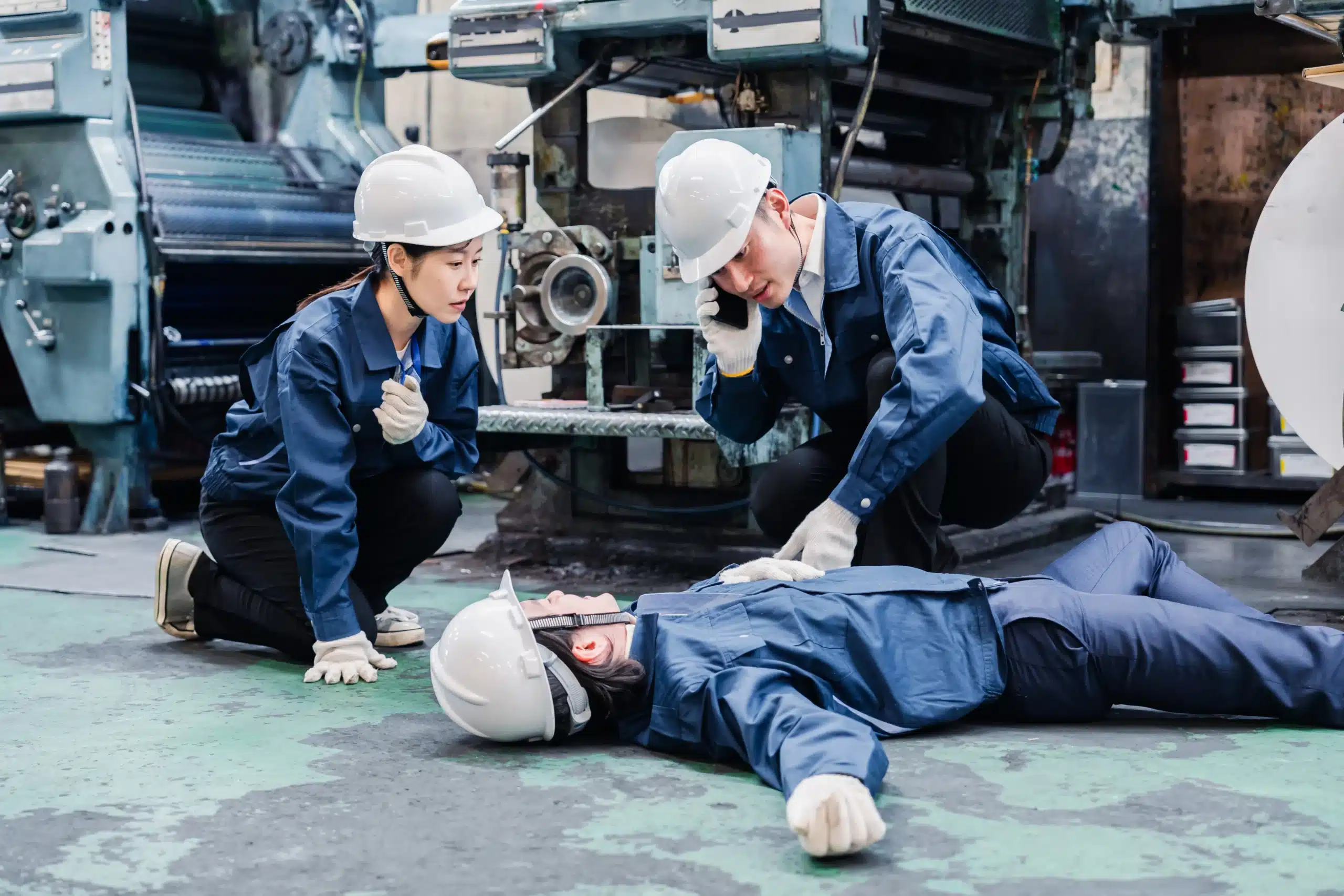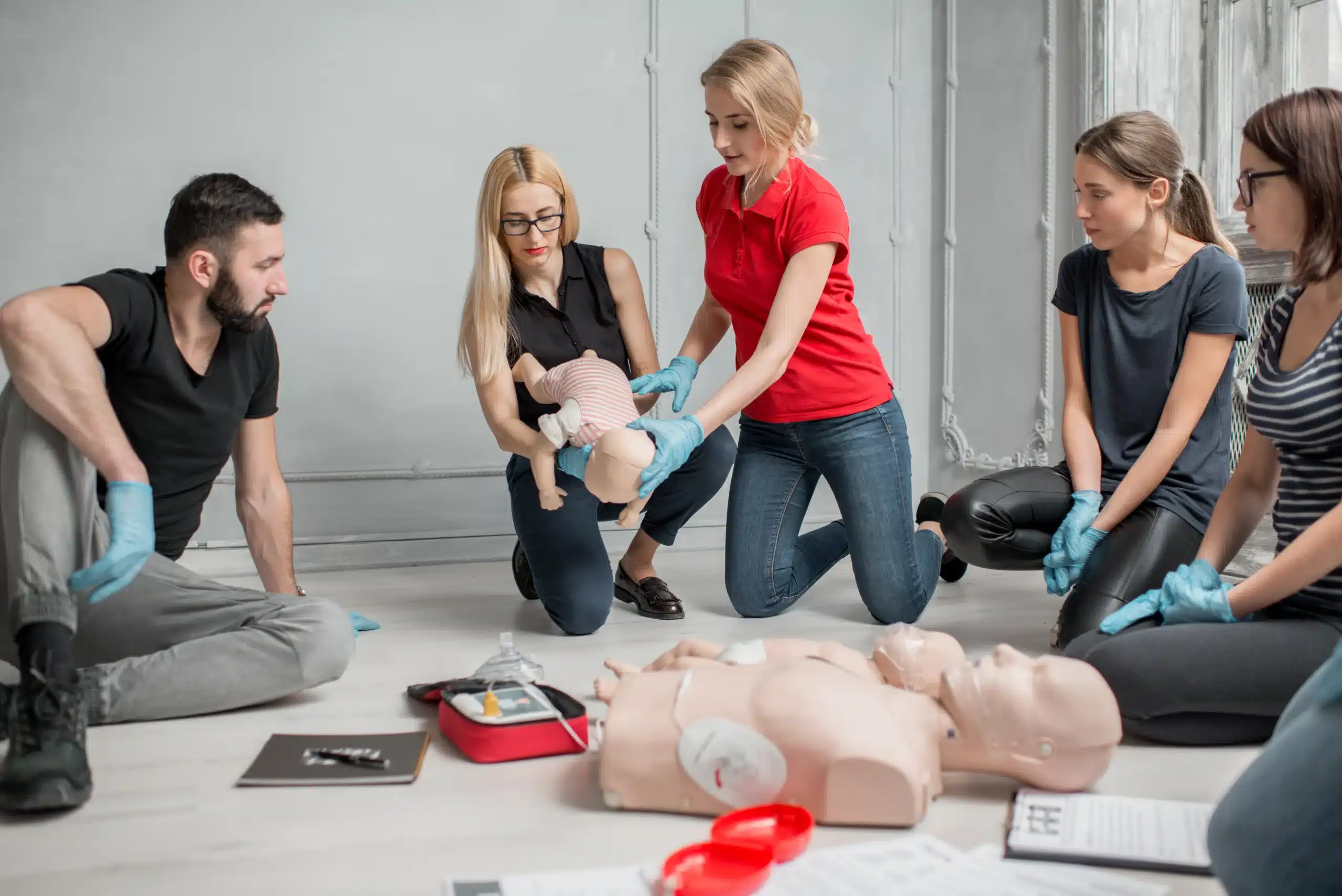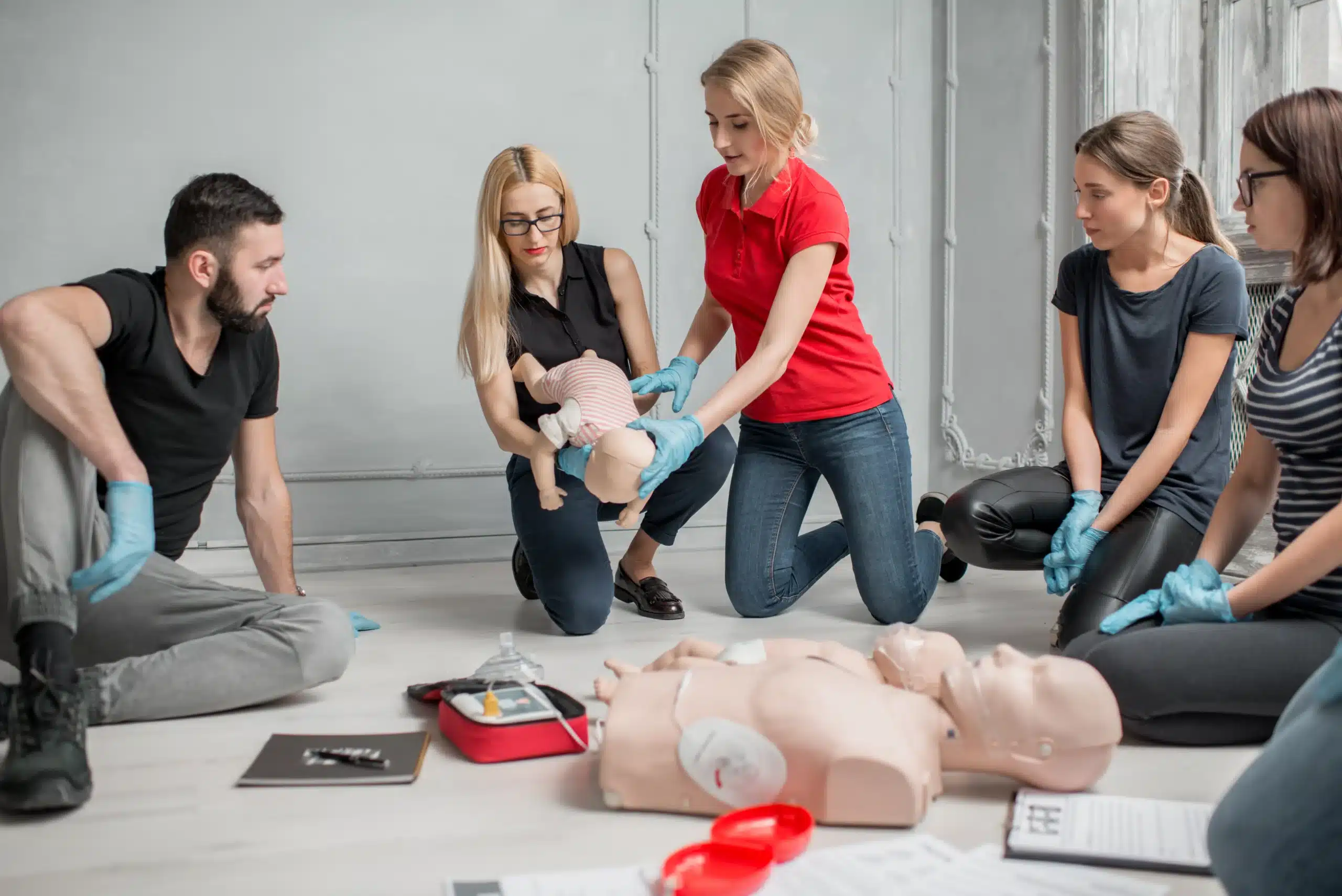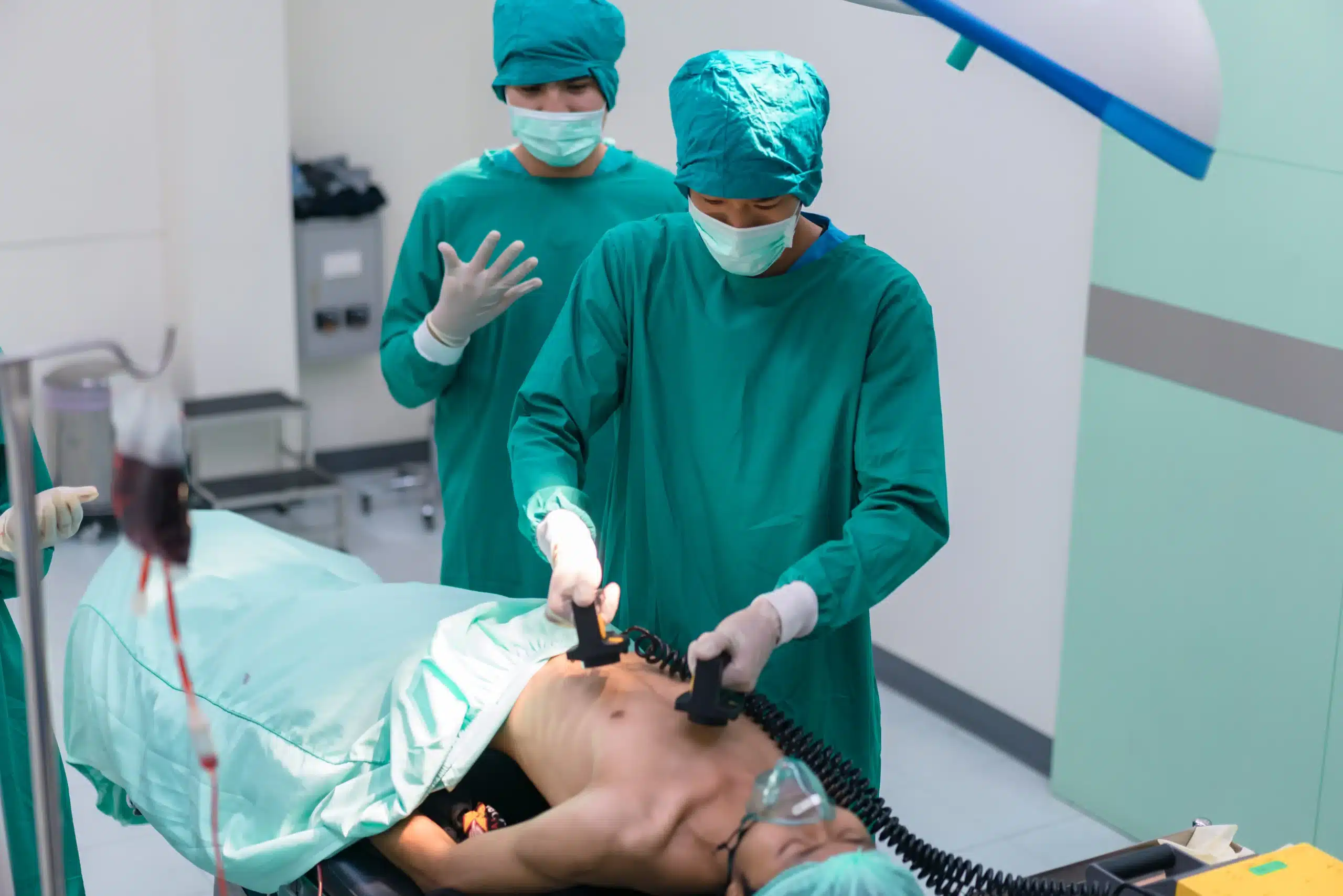Life throws curveballs, and sometimes those curveballs require immediate action. Knowing how to perform CPR can make a world of difference in those critical moments. If you’re in San Jose and looking for a flexible way to get BLS certified, HeartCode BLS might be the perfect solution. This blended learning approach combines online modules with an in-person skills session, allowing you to learn at your own pace and then demonstrate your proficiency. This article will guide you through everything you need to know about HeartCode BLS in San Jose, from the course structure and benefits to costs and registration.
Key Takeaways
- HeartCode BLS fits your schedule: The blended learning format lets you complete the online portion at your own pace, making it easier to fit BLS training into a busy life.
- Learn essential skills effectively: HeartCode BLS covers the same life-saving techniques as traditional courses, including CPR, AED use, and choking relief. The combination of online modules and hands-on practice ensures you can confidently apply these skills.
- Get certified affordably in San Jose: Milpitas CPR Classes offers HeartCode BLS at competitive rates, with group discounts often available. The process is simple: complete the online portion and then schedule a short in-person skills session.
What is HeartCode BLS?
HeartCode BLS is a course that teaches you how to respond to life-threatening emergencies. It equips you with the knowledge and techniques needed to perform Basic Life Support (BLS), including CPR, recognizing sudden cardiac arrest, and choking relief for adults, children, and infants. You’ll also learn how to use an AED and work as part of a resuscitation team. The skills you gain in a HeartCode BLS course can make a real difference.
What is blended learning?
HeartCode BLS uses blended learning, combining online learning with a hands-on skills session. This flexible format lets you study the course material online at your own pace and then demonstrate your skills in person. You’ll complete interactive modules, simulations, and assessments online before attending a shorter in-person session to practice and be evaluated. This blended learning format offers a convenient way to get certified.
What are the key components of HeartCode BLS training?
The HeartCode BLS course has two main parts. First, you complete the online portion, which includes interactive lessons, videos, and simulations. These online modules cover essential BLS knowledge and skills at your own pace. Second, you attend an in-person skills session with an AHA Instructor to practice what you learned online and demonstrate your proficiency. This combination of online learning and hands-on practice ensures you’re fully prepared.
HeartCode BLS Benefits in San Jose
HeartCode BLS offers several advantages, especially for busy professionals in San Jose. Let’s explore some key benefits:
Flexibility and Convenience
Juggling work, family, and other commitments can make fitting traditional classroom training into your schedule a challenge. HeartCode BLS offers a blended learning approach that combines online coursework with a hands-on skills session. This format lets you complete the online portion at your own pace, whenever and wherever it’s most convenient. Once you’ve finished the online modules, you schedule a short, in-person skills session to demonstrate what you’ve learned. This flexibility makes BLS certification much more attainable for those with busy lives.
Cost-Effectiveness
While there’s an upfront cost for BLS certification, it’s a valuable investment in your professional development and ability to respond to emergencies. The blended learning format of HeartCode BLS can also be more cost-effective than traditional classroom courses. Your certification is good for two years, making it a smart, long-term way to maintain these essential skills.
Improved Skill Retention and Application
HeartCode BLS uses engaging online learning tools like interactive exercises and simulations to reinforce learning and improve skill retention. Resources like those available from Saint Xavier University highlight the use of dramatizations, eSimulations, animations, and self-directed learning activities to create a richer learning experience. This active learning approach helps you grasp the concepts more effectively than passively listening to a lecture. The combination of online learning and hands-on practice in HeartCode BLS ensures you can confidently apply your skills in real-life situations.
HeartCode BLS Course Structure
HeartCode BLS uses a blended learning approach, combining online learning with an in-person skills session. This format lets you learn the material at your own speed and then demonstrate your skills in a practical setting.
Online Portion: Learn at Your Own Pace
The online portion of HeartCode BLS allows you to work through the course material whenever and wherever it’s convenient for you. You’ll use interactive modules, simulations, and videos to learn essential BLS knowledge and skills. This self-paced format accommodates busy schedules and different learning styles. This part of the course covers the same information as a traditional BLS course, including adult, child, and infant CPR, use of an AED, and relief of choking. You can review sections as needed and take breaks when you want, ensuring you fully grasp the concepts before moving on. Check out our BLS page for more details.
In-Person Skills Session: Practice Hands-On Skills
After completing the online portion, you’ll attend a relatively short in-person skills session with an AHA-certified instructor. This session focuses on practicing the skills you learned online, using mannequins and other training equipment. The instructor will provide feedback and guidance to ensure you’re performing the techniques correctly and confidently. This hands-on practice is crucial for mastering BLS skills and preparing you to respond effectively in real-life emergencies. You’ll receive your official American Heart Association BLS Provider certification card after successfully completing this skills check.
Skills You’ll Learn
HeartCode BLS covers a comprehensive range of life-saving skills. You’ll learn how to recognize the signs of a cardiac arrest, perform high-quality CPR for adults, children, and infants, use an automated external defibrillator (AED), and provide relief for choking victims. The course also emphasizes the importance of teamwork and communication during emergency situations. The HeartCode format uses interactive elements to reinforce learning and improve skill retention. You’ll practice these skills in the in-person session until you’re proficient and ready to respond to a real emergency. For additional information, visit our CPR and First Aid page.
HeartCode BLS Costs & Registration in San Jose
Getting your HeartCode BLS certification is straightforward and affordable, especially in San Jose. Let’s break down the costs and steps to register.
Pricing for Online & In-Person Components
The HeartCode BLS certification involves two parts: an online portion and an in-person skills session. The online component, called HeartCode BLS Online, costs $36 and usually takes 1–2 hours to complete. You’ll need to purchase this separately before scheduling your in-person skills checkoff. The in-person portion costs $63 and takes about an hour. Remember to bring your HeartCode BLS completion certificate to your skills session. In total, both components cost $99 (before any group discounts).
How to Register
Ready to sign up? Check the Milpitas CPR Classes website for the latest schedule and to register for the HeartCode BLS course. If the listed times don’t work for you, reach out—they’re happy to help you find a time that fits your schedule. You can contact them at (408) 843-7375 or send an email to [email protected].
Group Discounts & Special Rates
If you’re registering with a few friends or colleagues, you can save some money! Milpitas CPR Classes offers discounts for groups of 2–5 people. You’ll get 25% off the in-person skills session. Just use the coupon code BLS25 when you register.
San Jose Training Centers
Several reputable training centers in and around San Jose offer HeartCode BLS certification. Here are a few options:
Milpitas CPR Classes
Milpitas CPR Classes offers the American Heart Association’s HeartCode BLS course, combining online learning with a hands-on skills session. This blended learning approach lets you complete the online portion at your own pace before scheduling an in-person skills check. Upon successful completion of both, you’ll receive your official AHA BLS Provider certification card. Serving Milpitas, San Jose, and Santa Clara, they offer convenient, high-quality BLS training.
Emergency & Health Training Center
The Emergency & Health Training Center also provides HeartCode BLS training using a blended learning format. Students work through online modules independently and then demonstrate their skills in a supervised, in-person session. Check their website for schedules and availability.
First Support CPR
First Support CPR uses the HeartCode platform for their BLS courses. Their program incorporates various eLearning tools, including simulations and interactive activities. Like other HeartCode courses, an in-person skills session is required after the online portion for certification.
Safety Training Seminars
Safety Training Seminars offers HeartCode BLS with a blended learning approach. They emphasize the flexibility of online learning, allowing students to learn at their own pace before a brief, in-person skills session. This format makes it easier to fit BLS training into busy schedules. They are affiliated with Milpitas CPR Classes.
Course Duration & Certification
Time Commitment for Online & Hands-On Training
HeartCode BLS uses blended learning, combining online coursework with a hands-on skills session. This lets you complete the online portion at your own pace. The online modules typically take a few hours, and you can pause and resume whenever you need to. This flexibility is especially helpful for busy professionals. Once you finish the online portion, you’ll schedule a short, in-person skills session. This session usually lasts about an hour or two, depending on the training center. You’ll practice the skills you learned online with an AHA Instructor and receive real-time feedback. Safety Training Seminars offers more information on the HeartCode BLS process. It’s a convenient way to get certified without disrupting your schedule.
Certification Validity & Renewal
After you complete the online modules and the in-person skills check-off, you’ll receive your American Heart Association BLS Provider certification card. This certification is valid for two years from the date of your skills session. To maintain your BLS certification, you’ll need to retake the course before it expires. This ensures your skills and knowledge are current with the latest AHA guidelines. Main Line Family Education clarifies BLS renewal requirements. Plan to renew your certification to maintain your credentials and stay up-to-date in your field.
Who Should Take HeartCode BLS?
HeartCode BLS is a valuable certification for a wide range of people, from healthcare professionals to those in other fields. It’s designed to equip people with the skills to respond effectively in emergencies. Let’s explore who can benefit from this training.
Healthcare Professionals
BLS certification is often a job requirement for many healthcare providers. Medical facilities typically require BLS certification for nurses, doctors, EMTs, paramedics, and other medical personnel. This training gives these professionals the essential skills to deliver timely and appropriate care during emergencies, ultimately improving patient outcomes. It ensures they are prepared to handle cardiac arrest, respiratory distress, and other life-threatening situations. Holding a current BLS certification demonstrates a commitment to maintaining a high standard of care and is vital for career advancement in the healthcare field.
Other Professions Who Benefit from BLS
While BLS certification is crucial for healthcare professionals, its value extends to many other professions. Anyone who might encounter a situation requiring CPR or AED use can benefit from BLS training. This includes teachers, coaches, childcare providers, lifeguards, security personnel, and even those who want to be prepared for emergencies at home. BLS training empowers individuals to respond confidently and effectively in critical situations, potentially saving lives. It’s not just about job requirements; it’s about personal preparedness and having the skills to make a difference when it matters most. This training is for anyone, regardless of their medical background.
HeartCode BLS vs. Traditional BLS
Deciding between HeartCode BLS and traditional BLS? Both lead to the same American Heart Association BLS Provider certification, but their learning styles differ. Traditional BLS courses are entirely in-person, while HeartCode BLS uses blended learning. This section will help you understand the key differences and choose the best fit for your learning style and schedule.
Advantages of Blended Learning
HeartCode BLS offers a blended learning approach, combining online coursework with a hands-on skills session. This flexible format lets you complete the online portion at your own pace. You’ll work through interactive modules, simulations, and videos, then attend a shorter in-person session to practice and demonstrate competency. This approach is particularly helpful for those who prefer self-directed learning or have busy schedules. The online portion uses various eLearning assets, including dramatizations, simulations, and interactive activities, to make learning engaging and effective.
Choosing the Right Course
Which course is right for you? If you value flexibility and self-paced learning, HeartCode BLS might be a good fit. You’ll still get the same high-quality instruction and hands-on practice as a traditional course, but with added convenience. After completing both the online modules and the in-person skills check, you’ll receive your American Heart Association BLS Provider certification card. Regardless of your chosen format, the in-person skills practice and testing session are essential for certification. This hands-on component ensures you can confidently apply your knowledge in a real-world emergency. Consider your learning preferences, schedule, and comfort level with technology when making your decision.
Related Articles
- BLS Certification in San Jose: Your Complete Guide – Milpitas CPR Classes
- BLS Certification Milpitas: Your Comprehensive Guide – Milpitas CPR Classes
- BLS for Healthcare Providers in Santa Clara: A Guide – Milpitas CPR Classes
- BLS Courses in San Jose: Your Complete Guide – Milpitas CPR Classes
- BLS Certification for Healthcare Providers in San Jose – Milpitas CPR Classes
Frequently Asked Questions
What is the difference between HeartCode BLS and traditional BLS? Both HeartCode BLS and traditional BLS courses result in the same AHA BLS Provider certification. The key difference lies in the learning format. Traditional BLS involves in-person classroom instruction, demonstrations, and practice. HeartCode BLS uses a blended learning approach, combining online self-paced modules with a shorter, in-person skills session.
How long does it take to complete the HeartCode BLS course? The online portion of HeartCode BLS typically takes between one and two hours to complete, though you can work through it at your own pace. The in-person skills session usually takes about an hour or two.
How much does HeartCode BLS certification cost? The HeartCode BLS course has two parts with separate costs. The online portion costs $36. The in-person skills session costs $63. This brings the total cost to $99, before any applicable group discounts.
Where can I take a HeartCode BLS course in San Jose? Several training centers in and around San Jose offer HeartCode BLS certification, including Milpitas CPR Classes, Emergency & Health Training Center, First Support CPR, and Safety Training Seminars. Check their websites or contact them directly for schedules and availability.
How long is my BLS certification valid, and how do I renew it? Your BLS Provider certification is valid for two years from the date you complete your in-person skills session. To renew your certification, you’ll need to retake the BLS course before it expires. This ensures your skills and knowledge are up-to-date with the latest AHA guidelines.

